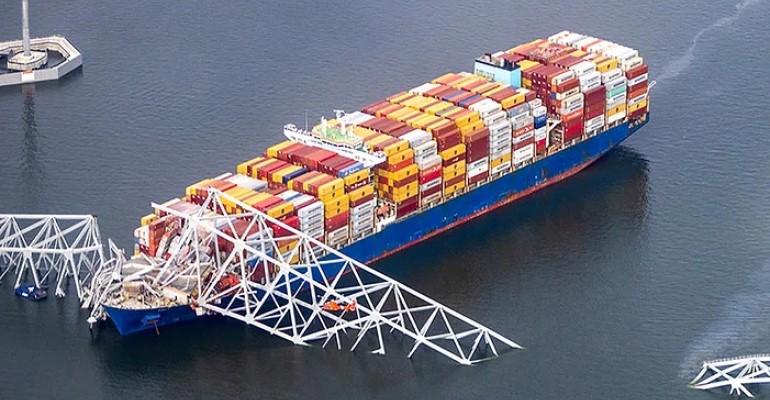On the day following the accident, a team of professors from John Hopkins University, a prestigious institution located in downtown Baltimore, presented a webinar on these subjects. Professor Tinglong Dai, an expert on supply chains from the university’s business school, expressed horror at the bridge collapse, and said: “From a supply chain perspective, which is my expertise, the effects will be mostly local, mostly minimal, and mostly temporary.”
He did emphasise that movements of automobiles – where Baltimore ranks above other US ports and benefits from its position with access to the Midwestern United States– could become a cause for concern, saying: “Its role in the US supply chain, or even the global supply chain, is essential.”
He also pointed to Baltimore’s prime location and superb positioning, going forward, as national security concerns will increasingly dominate the movement of cargoes. “We are not changing the long-term trajectory of the port,” Dai said. “The Port of Baltimore is like the Taylor Swift of US auto-ports,” he said.
An important question for the short term was how long it would be until the channel feeding the main port area –a short run westward from the site of the mangled agglomeration of boxes and bridge– would be cleared for vessel transits.
In an equity research report, looking at the prospects for leading “Class 1” railroad CSX, a major transporter of coal from mines in the Appalachian region, analysts from Deutsche Bank led by Amit Mehrotra, suggested a fairly short time frame: “The bottom line is CSX's weekly coal volumes are likely to be down a lot in the coming weeks; if we assume an impact for 2 months, we see max potential for about 30k lower coal carloads.”
Professor Ben Shaffer, from the Engineering side of Johns Hopkins, suggested an overall timeline for reconstruction of a bridge approaching a decade, saying: “ I've lived through quite a few civil infrastructure projects. And they're rarely less than 10 years. So, I think that's what we're looking at.” On timing of a channel proper clean-up in advance of vessel passages, he suggested that it could be accomplished on a timeline of “weeks and months to remove the debris and re-open the shipping channel; I’d be shocked if it’s weeks, but I don’t think that it would take even a year.”
An important aspect of supply chains is their resiliency, with the practical impact being the ability for vessels to be re-routed– a point emphasized by Professor Dai on the webinar. Maritime information provider Windward, in a post-Dali media outreach, wrote that: “Between March 25th-26th there has been a 50% increase in destination updates for the expected arrival vessels to Baltimore. Some of the new destinations include the ports of Norfolk, Savannah and a few have updated that they plan to skip the US entirely.”
Windward, using its vessel tracking algorithms, added: “Behavior wise – Windward’s data shows that between March 25-26 there has been a 600% increase in vessels that conducted long drifting activities in the North Atlantic/United States EEZ, which might mean that these vessels are waiting to see where they will be headed and plan their journey anew due to the situation.”
The seemingly short-term nature of Baltimore-related disruptions is borne out in the views of the stock-watchers. In discussing Baltimore’s container routings –which are also moving on CSX trains– the Deutsche Bank analysts wrote that: “The temporarily displaced imports should be able to easily reroute to nearby ports of entry. There is also plenty of available outbound capacity to divert the 200k+ loaded exports that leave Baltimore each year.”
Analysts at Jefferies and Company, another top shipping shares-watcher, led by Omar Nokta, did not see any cause for alarm in a “day after” report, albeit with a caveat that the automobile trades need to be monitored.
“Overall it appears the market impact on container shipping and dry bulk will be relatively muted though at the margin this disruption does have some tightening effect. However, for car carriers, we view the disruption as potentially significant should the port become closed for an extended period of time.”
Copyright © 2024. All rights reserved. Seatrade, a trading name of Informa Markets (UK) Limited.
Add Seatrade Maritime News to your Google News feed.  |

